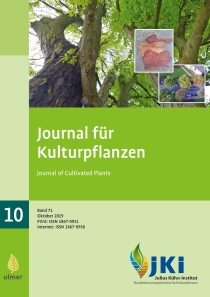Differential diagnosis of the pathogens <em>Pseudomonas syringae pv. aesculi</em> and <em>Phytophthora spp.</em> at <em>Aesculus</em> spp. in the urban area of Hamburg
DOI:
https://doi.org/10.5073/JfK.2019.10.01Keywords:
Pseudomonas syringae pv. aesculi, Phytophthora cactorum, Aesculus hippocastanum, Aesculus carnea, PCR, Hamburg, Bark diseaseAbstract
During the third survey in the Free and Hanseatic City of Hamburg on Aesculus spp. 94 horse chestnut trees of the species A. hippocastanum and A. carnea with bleeding canker symptoms were examined. Subject of the screening were the pathogens Pseudomonas syringae pv. aesculi and Phytophthora spp. The trees were selected according to the macroscopically recorded damage pattern and the spatial distribution in the urban area. The sampling procedure was performed in a minimally invasive manner. The molecular biology examination was carried out on the day of sampling, allowing the laboratory findings to be available the following day. In total, 82 horse chestnut trees were tested positive for P. syringae pv. aesculi and 7 horse chestnut trees for Phytophthora spp. The sequencing revealed that the Phytophthora pathogen is Phytophthora cactorum. In addition, co-infection with both pathogens was found in 3 Horse Chestnut trees.
Downloads
Published
Issue
Section
License
The content of the journal is licensed under the Creative Commons Attribution 4.0 License. Any user is free to share and adapt (remix, transform, build upon) the content as long as the original publication is attributed (authors, title, year, journal, issue, pages).
The copyright of the published work remains with the authors. The authors grant the Journal of Cultivated Plants, the Julius Kühn-Institut and the OpenAgrar repository the non-exclusive right to distribute and exploit the work.







